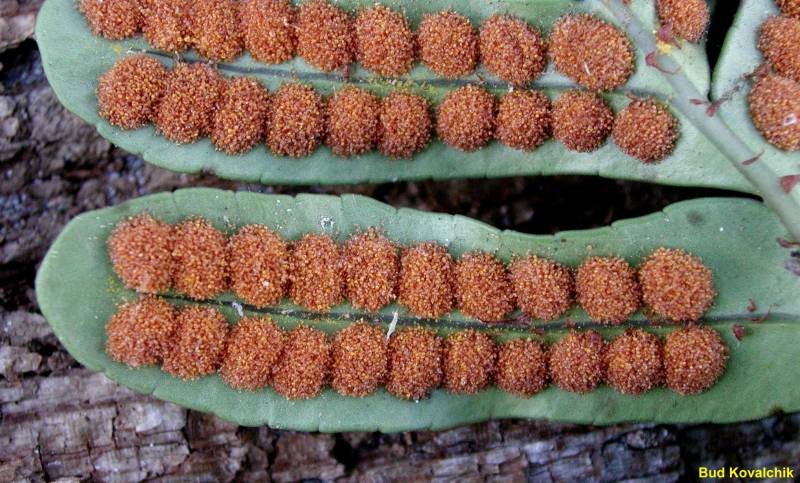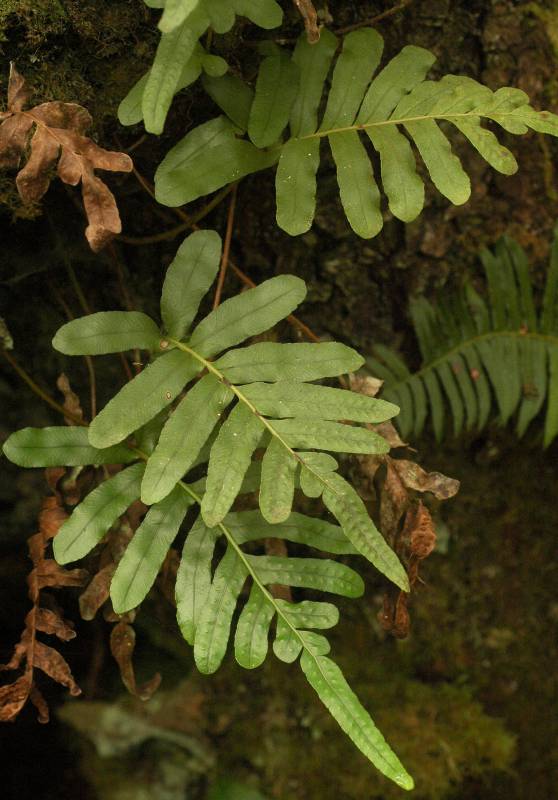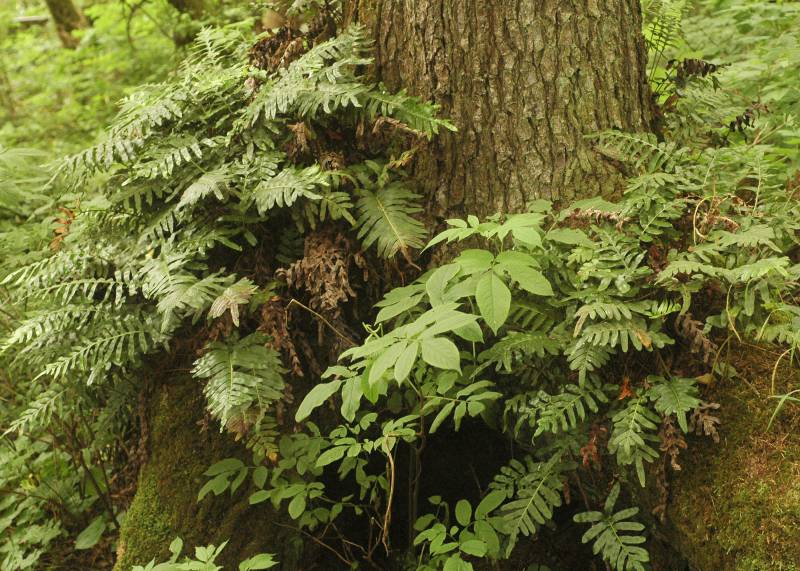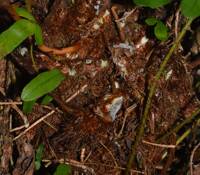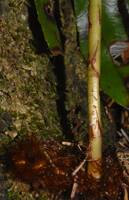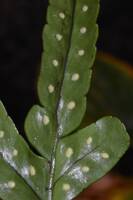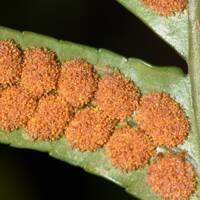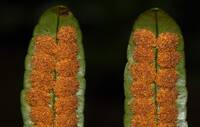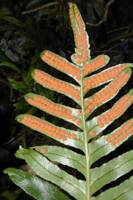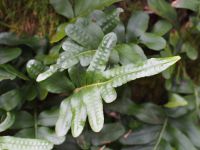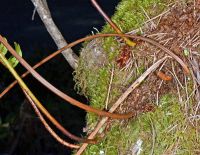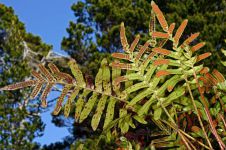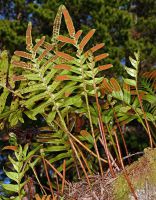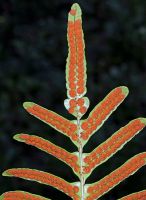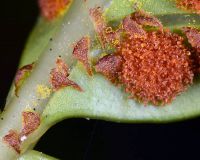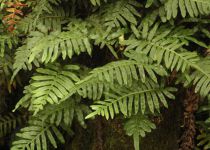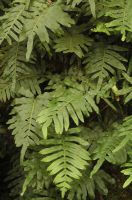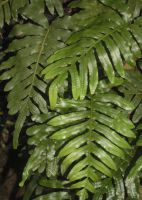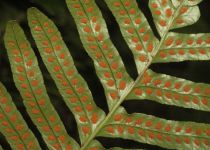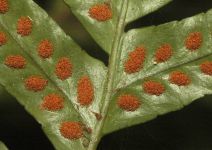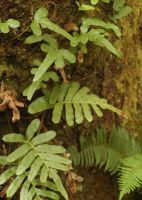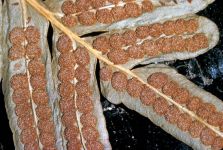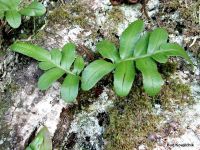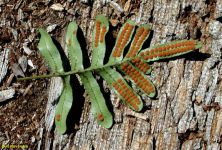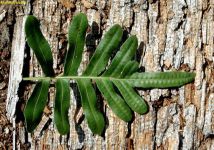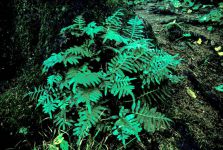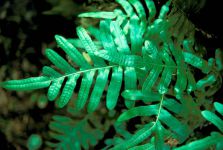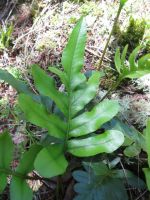Distribution: Occurring west of the Cascades crest in Washington; British Columbia south along the coast to California.
Habitat: Cliffs and rocky outcroppings along the coast.
Origin: Native
Growth Duration: Perennial
Conservation Status: Not of concern
Perennials, usually lithophytes; stems stout, 3-12 mm in diameter, whitish pruinose, bland to somewhat sweet flavor; scales solid dark brown or with pale edges, lanceolate, margins finely toothed.
Leaves monomorphic, to 85 cm long and 27 cm broad on stout petioles to 3 mm in diameter; blade ovate-lanceolate, pinnafitid, typically widest just above base, stiff and leathery; rachis sparsely scaly to glabrescent beneath and glabrous above; scales dark brown with pale edges, ovate-lanceolate, greater than 6 cells wide; segments oblong to linear, usually more than 12 mm broad, margins entire to finely scalloped; apex rounded or uncommonly broadly acute; midrib glabrous on upper surface; venation joining to usually form 1 row of areoles.
Sori in 2 rows tightly spaced against midrib, usually larger than 3 mm in diameter, circular when immature; spores usually less than 52 micrometers, surfaces wrinkled.
Publication: Icon. Filic. 1: 56. 1829.
PNW Herbaria: Specimen records of Polypodium scouleri in the Consortium of Pacific Northwest Herbaria database
WA Flora Checklist: Polypodium scouleri checklist entry
OregonFlora: Polypodium scouleri information
E-Flora BC: Polypodium scouleri atlas page
CalPhotos: Polypodium scouleri photos

